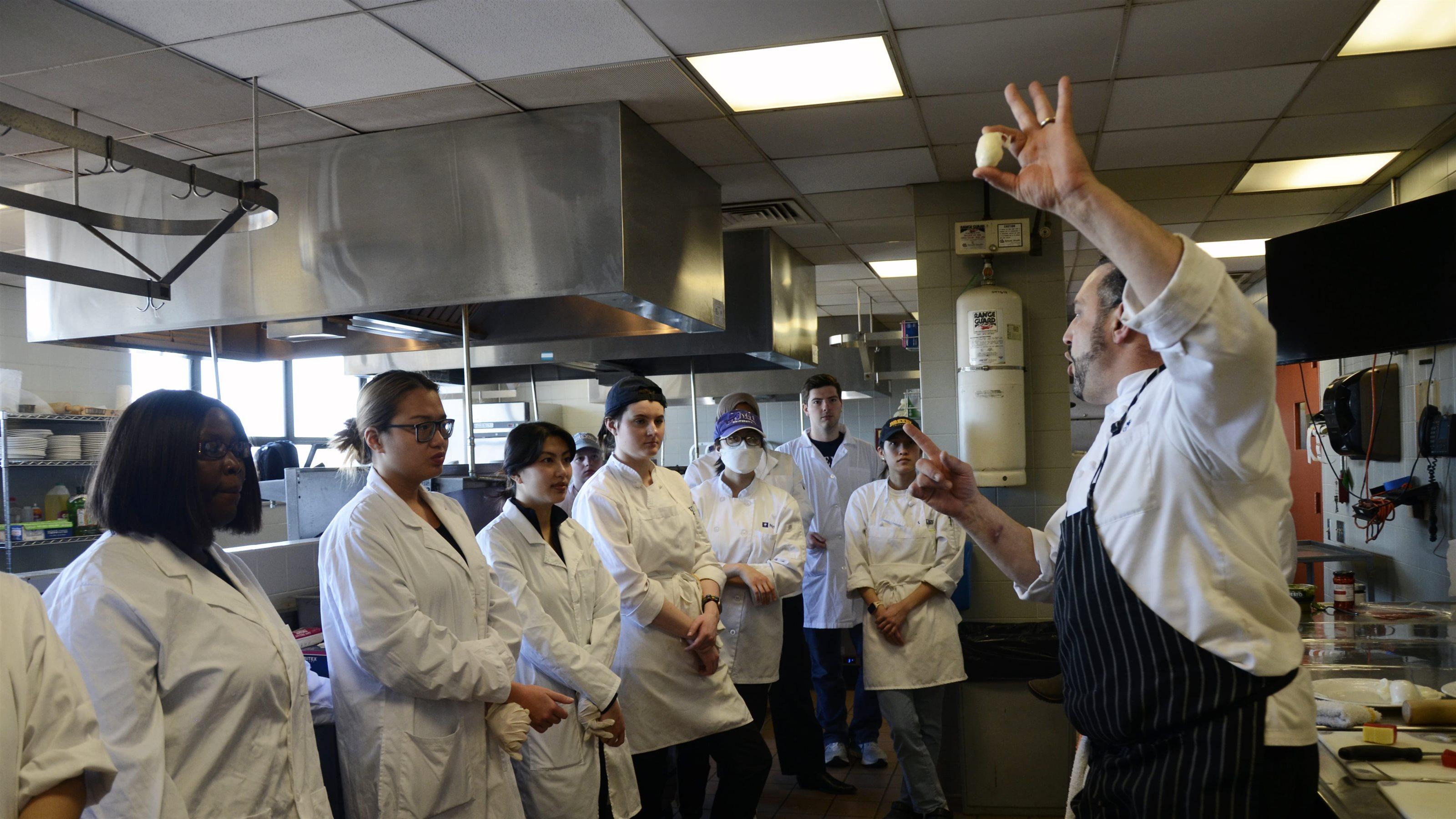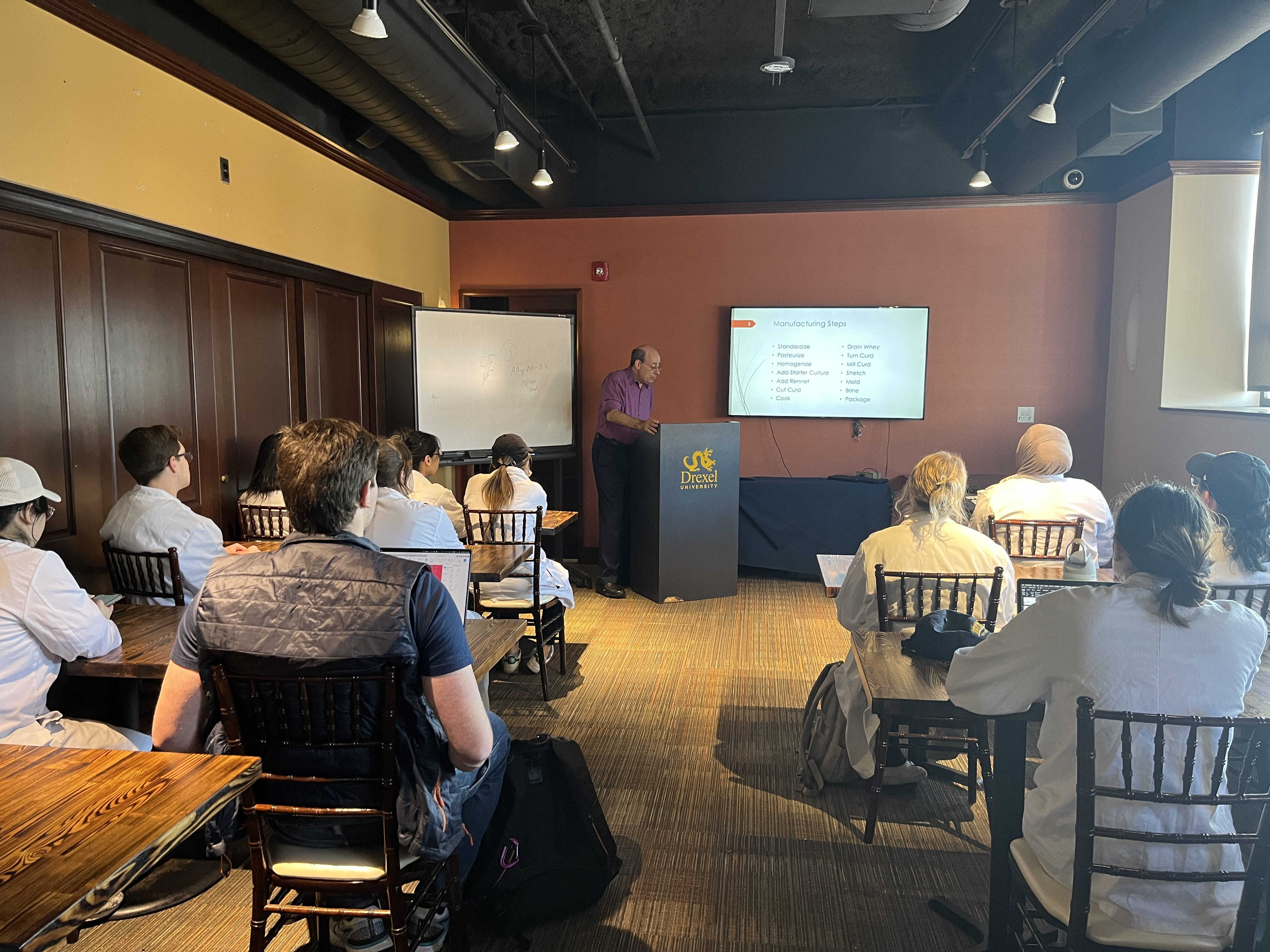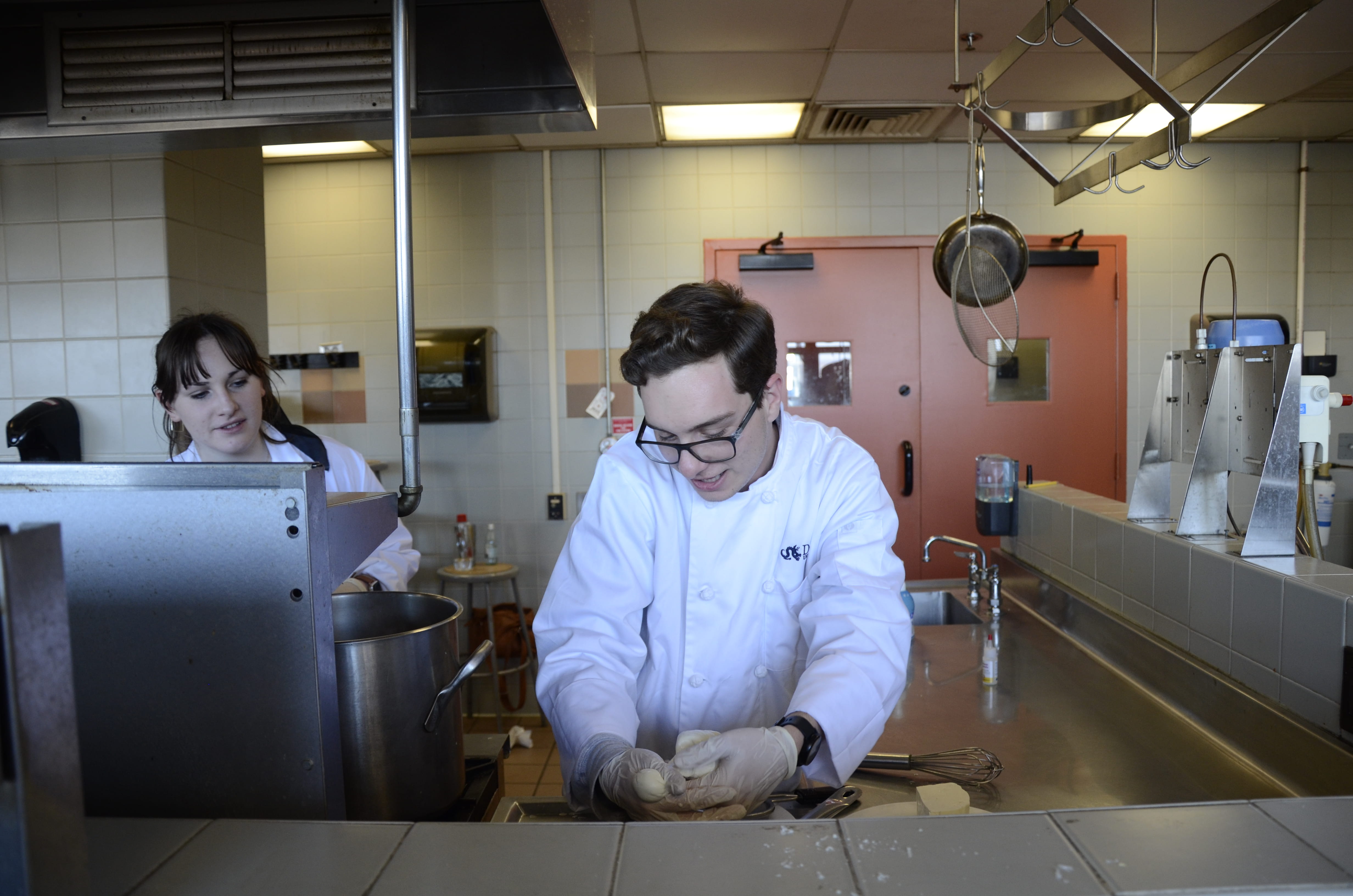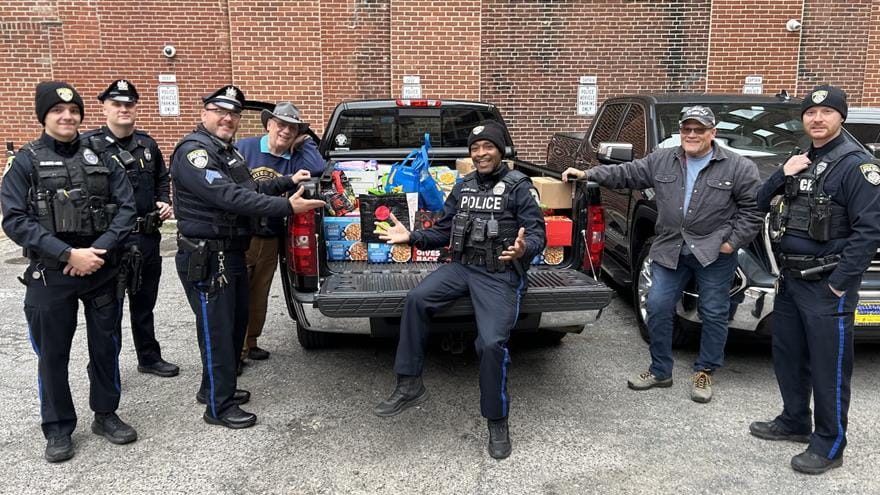A Day in the Class: 'Cheesemaking' for All

Chef Rich Pepino demonstrates the size and shape of ciliegine mozzarella.
This series highlights interesting, unique, and innovative courses open to all undergraduates at Drexel University.
"Cheesemaking" (Food Science 580) is a special topics course that, as you might expect from its name, shows the ins and outs of cheesemaking. And, as you also might expect from a class about cheesemaking, it also features a lot of cheese-eating and cheese-talking.
During a day in the class during week three, DrexelNow stopped by to observe the students pulling and stretching mozzarella.
Five things to know about "Cheesemaking":
1. It's the First of its Kind
This is the program's first class taught by not one or two but three experts (all of whom are Drexel alumni) from the Department of Food and Hospitality Management in the College of Nursing and Health Professions:
- Rich Pepino, executive chef in hospitality management
- Rosemary Trout, DHSc, culinary arts and food science program director and assistant clinical professor
- Michael Tunick, PhD, assistant clinical professor
It's also the first cheesemaking class, but not the first class from the department that is available to all. The class is a mix of students from different majors and disciplines alongside students from the Department of Food and Hospitality Management.
(Take note, Drexel students! In the spring there's “Culinary Fundamentals,” “Global Cuisine Studio,” “Food Composition and Behavior,” “The Science of Food and Cooking,” “Food and the Senses,” “Food Writing” and “The Kitchen Garden,” which is also offered in the summer and was previously written about.)

2. There Are Many Cheese Pairings
Usually, there's a lecture component that goes over what the students are going to do in class. That is covered by Tunick, who has written the book on the science of cheese — literally, that's the title — and spent four decades working at the U.S. Department of Agriculture (USDA) to develop and research dairy products.
There's also a "taste and talk" component, as Pepino calls it, and that's how the students get their hands on hands-on cheesemaking. He holds demonstrations for students, and also prepares samples of what they're making and what they could serve with the cheese.
Trout is on hand for additional contributions and to discuss other parts of the cheesemaking process, including the nutritional information and the senses students should pay attention to when creating and plating their product (What does it look like? How does it smell?). She also puts that same expertise of reviewing and explaining culinary creations into the Epicurious '4 Levels' video series (most recently for garlic bread).
3. A Recipe for Three Courses in One
Based on the strengths, experiences and expertise of the three instructors, this course is like three courses in one. There's the chemistry component behind converting milk to cheese. There's the culinary know-how needed to make, shape and finish a cheese — and, outside of the kitchen, plate the cheese and know what to serve with it. And then there's learning about the nutritional and functional aspects of dairy and cheese, along with sensory evaluation techniques.
Cheesemaking is a specialized skill, but knowing and eating cheese is universal and approachable (and fun!). Students who aren't planning to go into the culinary or food industry like some of their classmates can still gain the ability to make cheese at home and broaden their culinary and food chemistry knowledge.

Kylie Mika watches as Alan Stelmukh shapes the mozzarella into a smaller ball.
4. Yes, Students Really Make All of the Cheeses
The class covers five different types of cheeses:
- Cheddar
- Mozzarella
- Chèvre
- Ricotta
- Mascarpone
All of these cheeses range in manufacturing process, style, texture, taste and use.
Students made the cheddar in week one and waxed it the week after. For the mozzarella, the students melted, pulled, folded, stretched and molded the cheese during week three (after watching a mozzarella pulling demonstration from Pepino).
Music industry majors Kylie Mika (favorite cheeses: brie and mascarpone) and Alan Stelmukh (favorite cheese: Gruyere) signed up for the class because they'd been wanting to take a food course — and once they got in, to the envy of their friends, they expanded their cheese appreciation and awareness. The class size was even increased from 16 to 19 students to accommodate sign-ups.

A sample of what the students could taste during the mozzarella-making class, from left to right: store-bought mozzarellas, the waxed cheddar from the last class, a rolled mozzarella with pesto and prosciutto, and the mozzarella that the students would heat, stretch and shape.
5. Obviously, There's a Tasting Element
Day one of the class started with a huge cheese board with spreads, breads and other accompaniments. From there, the students get to eat and even take home what they make, and they also try different versions of the cheese that are commercially available. During the mozzarella class, Pepino shared plates of mozzarellas (and burrata) from different brands, price points and styles. He also showed students how to roll the cheese with different spreads (a mozzarella rolled with pesto and prosciutto, and one with Calabrian chili and soppressata).
In This Article
Drexel News is produced by
University Marketing and Communications.

